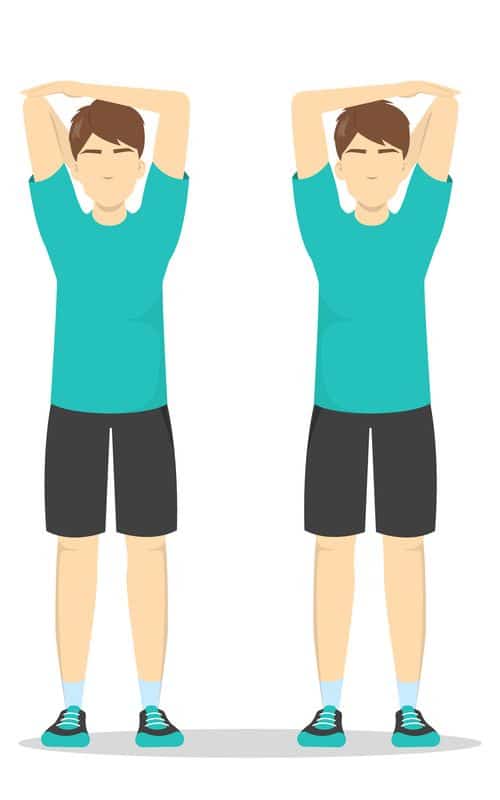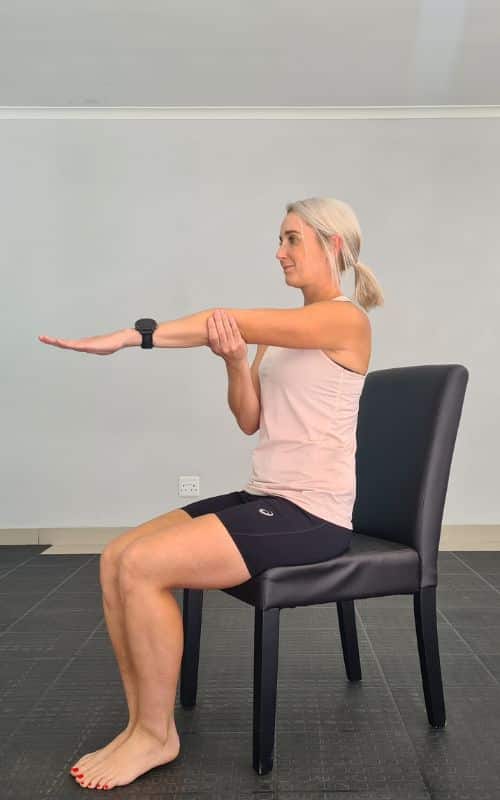Elbow bursitis is a condition where the bursa, a fluid-filled sac that cushions the elbow joint, becomes inflamed, and targeted elbow bursitis exercises can help relieve pain and then restore mobility.
This often happens due to overuse, repetitive movements, or trauma, and is common in activities like sports, manual labor, or even extended periods of desk work.
The inflammation can lead to pain, swelling, and then limited movement in the elbow, making everyday tasks more difficult.
The goal of this blog is to provide you with effective elbow bursitis exercises that can help relieve pain, improve mobility, and then speed up the healing process.
Elbow bursitis is the inflammation in the olecranon bursa — the fluid-filled sac that protects and cushions your elbow joint.
However, it’s usually caused by overuse from your job or activities like sports.
You’ll probably only need at-home treatments, including elbow bursitis exercises to help your bursa heal. Most people recover in three to six weeks.
By following these exercises, you can promote recovery and get back to your normal activities more quickly.
Medical Disclaimer: The information in this blog is for enlightening and educational purposes only and is not intended as medical advice. The content in this post is not meant to substitute for a professional medical diagnosis, advice, or treatment. Always ask advice from your physician or other qualified health providers with any questions you may have regarding a medical condition.
Typical Rehabilitation Exercises
1. Elbow Flexor Stretch

- Begin in a standing position with your feet hip-width apart, ensuring your head, shoulders, and hips are aligned.
- After that, engage your core for stability.
- Extend one arm straight behind you at shoulder height, with your palm facing up and fingers pointing down.
- Gently rotate your shoulder outward, pressing the palm or fingertips against a wall or flat surface behind you.
- As you deepen the stretch, feel the tension release across the front of your upper arm and elbow.
- Hold the stretch for several deep breaths, inhaling through your nose and then exhaling through your mouth.
- After that, slowly return to the starting position.
- Repeat the stretch on the opposite arm.
2. Elbow Extensor Stretch

- Begin in an upright sitting or standing position with your feet flat on the floor, maintaining good alignment with your head, shoulders, and hips.
- Also, please extend one arm straight overhead, with your elbow fully extended and then your palm facing inward.
- After that, gently bend your elbow, bringing your hand down behind your head towards your upper back, with your elbow pointing toward the ceiling.
- With your opposite hand, gently press on the bent elbow to deepen the stretch, feeling the stretch along the back of your upper arm and forearm.
- Hold this position for several deep belly breaths, in through your nose and out through your mouth.
- Relax and then return to the starting position.
- Repeat the movement on the opposite side.
3. Pronation and Supination Stretch

- Begin in an upright sitting position on a chair with your feet flat on the floor, maintaining good alignment with your head, shoulders, and hips.
- Extend one arm straight out at shoulder height with your palm facing down.
- Use your opposite hand to gently hold just above the wrist.
- Slowly rotate your forearm to turn the palm up (supination), then rotate it to turn the palm down (pronation).
- Move within a comfortable range, aiming for a gentle stretch through the forearm.
- Repeat the movement for 5 repetitions, then switch arms and repeat.
4. Hand Flips

- Begin in an upright sitting position on a chair with your feet flat on the floor, maintaining good alignment with your head, shoulders, and hips.
- Rest the backs of your hands on your thighs with your palms facing up.
- After that, engage your core.
- Slowly rotate your hands to turn your palms down onto your thighs, then flip them back up to face the ceiling.
- Furthermore, repeat this flipping motion in a controlled manner.
- Complete the movement for 1 set of 10 repetitions.
How to Treat Elbow Bursitis at Home
Protect the Elbow
Use elbow pads or wraps to cushion the affected area and prevent further strain.
Avoid Pressure on the Elbow
Avoid leaning on or putting direct pressure on your elbow, especially during activities like desk work or lifting.
Pain Relief Methods
Take anti-inflammatory medications like ibuprofen to reduce swelling and relieve pain. Always follow your doctor’s instructions.
Dr. Ilya Voloshin recommends early treatment for elbow bursitis with rest, NSAIDs, and fluid aspiration if infection is suspected.
Prevention Tips
To avoid flare-ups, give your elbow regular breaks, avoid repetitive motions, and consider wearing elbow protection during activities that could cause further irritation.
Types of Elbow Bursitis

Caused by minor trauma, with a non-tender swelling over the olecranon. No signs of infection like redness or fever.
- Septic Olecranon Bursitis:
Caused by infection, with pain, swelling, warmth, and then redness. About 50% of patients may have a fever.
The following are things you can do to help prevent bursitis from returning:
- Keep pressure off your elbows. Do not lean on the elbows often, such as when working at a desk.
- Avoid hitting or bumping the elbows. Wear elbow pads or protectors when you begin normal activities. Wear them whenever you do activities that could cause bumping or hits to your elbows.
- Refrain from gripping small items too tightly. This includes using tools and writing with pens or pencils. Try not to clench your fists.
- Take breaks when doing activities or exercises that use repeated movements. This may help prevent injury caused by overusing or over-exercising your elbows. Wear an elbow strap when playing sports that use repeating movements, such as tennis.
- Warm-up and cool down. Start exercising when the doctor or physiotherapist says that it is safe. Always warm up your muscles and stretch gently before exercising. Do cool-down exercises when you are finished. This will loosen your muscles and decrease stress on your elbow.
- Start treatment right away if you feel bursitis signs and symptoms. Follow the R.I.C.E. plan (rest, ice, compression, and elevation) whenever you have swelling, warmth, or pain in your elbow.
Symptoms of Elbow Bursitis
- Swelling [2]: Noticeable swelling at the back of the elbow.
- Pain: Discomfort, especially with pressure or movement.
- Tenderness: Sensitivity to touch around the elbow.
- Redness and Warmth: Skin may appear red and feel warm.
- Limited Movement [3]: Difficulty fully extending or bending the elbow.
- Fever: Possible with septic bursitis.
- Soft Lump: A non-tender bump at the elbow.
Conclusion
Elbow bursitis, or olecranon bursitis, can develop from prolonged pressure, trauma, or medical conditions like rheumatoid arthritis.
It causes pain, swelling, and restricted movement in the elbow. Effective management through wrist flexor stretches, physical therapy, and avoiding pressure can help the elbow heal.
If symptoms persist, medical intervention with antibiotics or surgery may be needed.
Early treatment can help you return to your normal activities with minimal discomfort.
Discover the 12 Best Foods to Ease Inflammation and Joint Pain—add these healing ingredients to your diet today and feel the difference. Start your journey to pain-free living now!
Frequently Asked Questions
How do I get rid of bursitis in my elbow?
The most common treatments for elbow bursitis include rest, avoiding pressure on the affected elbow, anti-inflammatory medications, physical therapy, and stretching exercises. If there’s infection, your doctor may also prescribe antibiotics or drain the excess fluid.
What triggers elbow bursitis?
Elbow bursitis can be triggered by trauma, prolonged pressure (like resting on hard surfaces), repetitive movements, or certain medical conditions such as rheumatoid arthritis, psoriatic arthritis, or tennis elbow. Overuse and prolonged leaning on the elbow are common culprits.
What is the fastest way to cure bursitis?
The fastest way to relieve bursitis involves reducing inflammation with rest, ice, and medications like NSAIDs. Physical therapy and specific exercises, such as wrist flexor stretches and range of motion exercises, can also help decrease pain and speed up healing.


